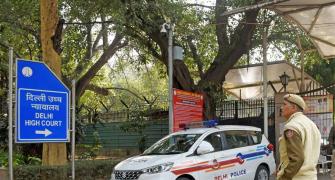 The government is hardly in a position to provide stimulus to industry.
The government is hardly in a position to provide stimulus to industry.
That's a given. But can industry help itself and in turn contribute to economic growth?
Corporate India's answer to that is an even more obvious one: it's safety first in an uncertain economic environment, where demand has been slowing.
Observers say India Inc would rather spend the next few years consolidating its operations rather than go for any aggressive capital expenditure in an uncertain environment.
"Companies take up new projects only in two scenarios: if they are generating free cash flows or if they foresee strong growth.
"Neither of this holds true right now.
So, I don't expect any quick revival in the corporate investment cycle," says Dhananjay Sinha, co-head, institutional equity, Emkay Global Financial Services.
A demand slowdown was clearly visible in the results for the quarter ended September.
Core revenues grew just 9.2 per cent -- the slowest in the last three years.
Aggregate net profit continued to be well below the recent high.
The slow demand growth has translated into spare capacity for companies in most sectors.
"Companies typically undertake capital expenditure when capacity utilisation is high, upwards of 80-85 per cent.
"But at an aggregate level, the current utilisation in many sectors is below this threshold utilisation level.
"This rules out any urge for launching new projects.
"A possible exception may be the auto sector, where despite falling utilisation levels there is significant capex activity," says Deep Narayan Mukherjee, director, corporate ratings, India Ratings & Research.
He attributes this to the cocktail of high inflation and poor growth in real wages.
"The private final consumption growth is at its lowest level in the last eight years, as consumers juggle between rising cost of living and stagnant or falling real incomes," he says, adding low demand growth has now become structural in nature and things will start looking up only when inflation is brought down and real wages start rising.
For India Inc, the asset turnover ratio (net sales divided by net assets) declined to 1.8x in FY12 from a high of 2.2x in FY07.
This indicates lower utilisation of capital, which takes away the incentive for companies to expand capacities.
The analysis is based on the annual consolidated financials of BSE-500 companies, excluding those from banking, financial services, oil & gas and IT sectors.
The universe includes 299 companies from 51 sectors whose annual profit and loss accounts were available since 2001.
What
The debt-equity ratio of companies in the sample shot up to 0.79 in FY12 from a low of 0.36 in FY05.
In fact, India Inc's balance sheet looks worse than it was in the early 2000s when GDP growth had slumped to a decade low of 3.8 per cent during the financial year ended March 2003.
This worries some experts.
"Given that the demand slowdown has not fully played out and profitability is still to hit a bottom, this is a recipe for greater financial pain for companies, especially those that had been overly aggressive in their growth plans" says Emkay's Sinha.
According to him, the indebtedness level of India Inc is reaching the low points of the late 1990s and debt exceeds equity for most leading manufacturing companies.
The poor profitability in the last few years has also reduced debt servicing ability.
At the peak of the economic boom in FY07, the cumulative operating profit of the sample companies was over nine times their annual interest obligation.
This ratio, also called interest coverage ratio, is now 4.6x and falling.
A similar trend is visible in the net debt to operating profit ratio, which has tripled in five years.
India Inc's outstanding debt (net of cash and liquid assets) has grown three times faster than profits since FY07.
This leaves less headroom for many companies to push for growth.
For example, sectors such as steel, construction, infrastructure and textiles are facing the problems of worsening balance sheets and macroeconomic headwinds.
But many experts say the aggregate demand in the economy is a bigger problem than the indebtedness of companies.
"The indebtedness has increased in the last few years, but the situation is far from alarming except in the case of a few companies in select sectors.
"Most of the leading companies in key sectors still have headroom to borrow.
"But why should they do it when the overall demand is slowing down?" asks Dara Kalyaniwala, vice-president, investment banking, Prabhudas Lilladher.
According to him, debt would have been a problem if the companies were not able to meet their interest obligation but that's not the case right now.
Experts say the macro averages hide a lot of variation across companies and sectors.
"Top companies in cement, automobiles, pharma and health care are in much better shape than in 2008.
"Their real constraints lie in the larger economy rather than in their balance sheets," says Mukherjee of India Ratings.








